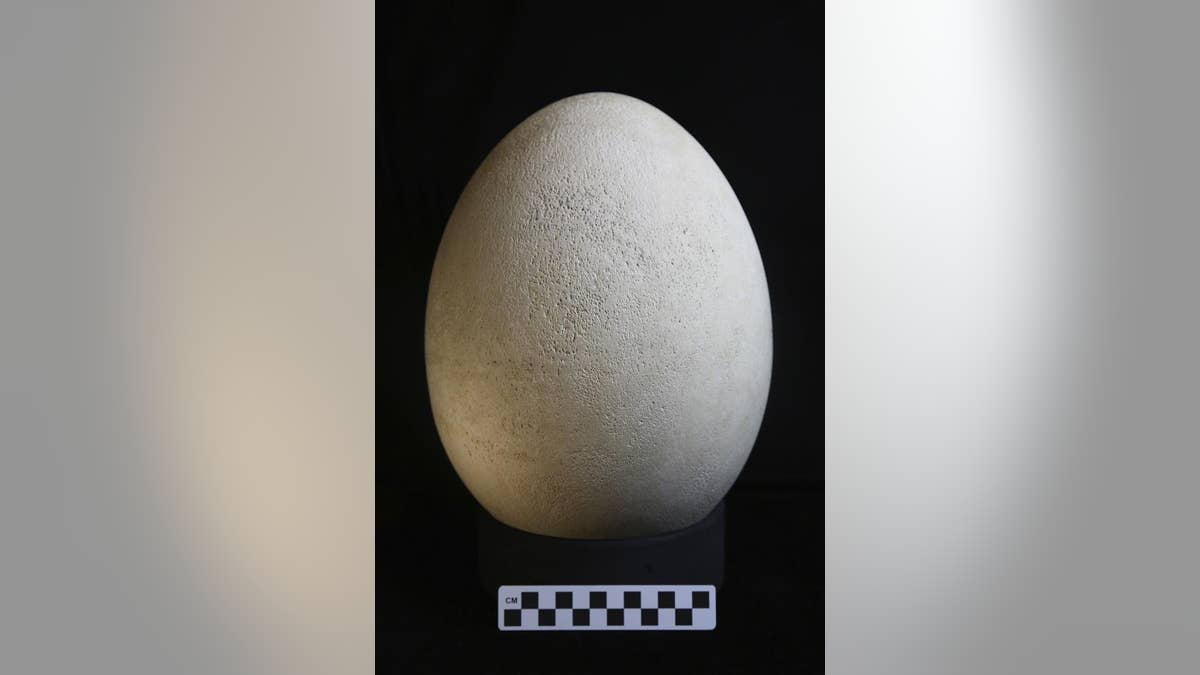
Curators at the Buffalo Museum of Science recently discovered a fully intact elephant bird egg that had been mislabeled as a replica. The museum will unveil the egg to the public May 1, 2018. (The Buffalo Museum of Science via AP)
The Buffalo Museum of Science has been sitting on a rare find. A collections manager with the museum discovered an elephant bird egg nestled away in a cabinet for more than half a century and erroneously labeled as a cast.
The egg is 1 foot long, more than 2 feet in circumference, and in pristine condition. "It's the biggest egg laid by any vertebrate ever," Kathryn Leacock, director of collections, told the Buffalo News. And that includes dinosaurs, the Smithsonian noted, which reported the egg's volume is equivalent to that of about 150 chicken eggs.
Convinced the specimen looked too real to be a model, the museum brought the egg to conservation experts at SUNY Buffalo State who radiographed and authenticated it.
The X-rays also revealed a yolk sac and specks of white material, indicating the egg had been fertilized, with the white bits possibly the early stages of a developing bird.
Elephant birds, which became extinct in the 17th century, could grow to a height of 10 feet and weigh as much as 1,100 pounds. The flightless birds were found on Madagascar and probably disappeared due to a combination of factors, reported Newsweek: The giant eggs were attractive to poachers, and environmental changes may have sealed their fate.
Museum records suggest that the egg was purchased from a London collector in 1939. "Lost, hidden, or misidentified artifacts and specimens are not uncommon in museums that have been collecting for centuries," Leacock said in a news release.
The egg, one of fewer than 40 held by public institutions, will be on display at the museum starting in May.
This article originally appeared on Newser.




















